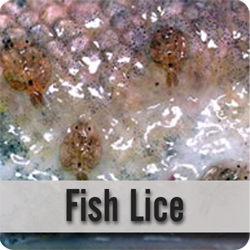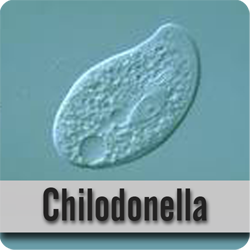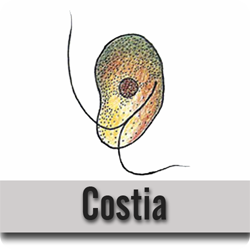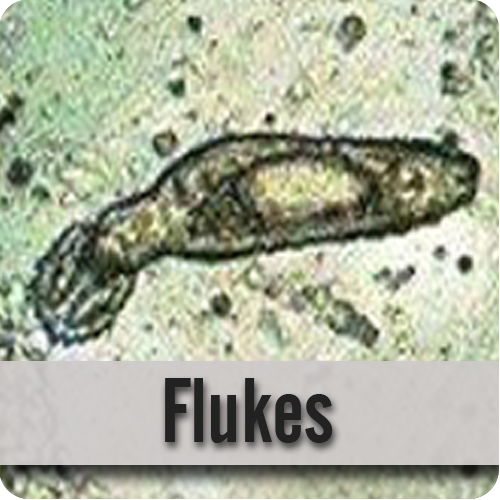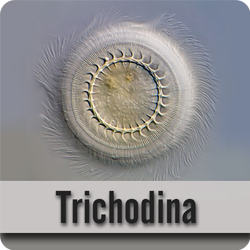Anchor Worm on Koi
Pond fish get anchor worms. It's a fact, Anchor Worms in pond environments are common. Your koi need not be ill, or stressed to contract Anchor Worm.
What are Anchor Worms?
Anchor worms are crustaceans; they have an exoskeleton that they continually shed as they grow. This parasite is aptly named for the anchor shaped appendages on its head which are used to attach to and hold on to its host. Anchor Worm removal is tricky. When the anchors are securely imbedded into the host they are difficult to remove without the use of tweezers. Great care should be taken with Anchor Worm removal as the head can be easily broken off and remain buried in the fish’s flesh.
Juvenile anchor worm parasites are microscopic and free swimming. Upon sexual maturity the juvenile parasites find a host and congregate on the gill tissues to mate. Upon mating the males die. The female then migrates onto the host’s body in and search of an acceptable site to take up residence. Her desired location is around a scale where she will burrow her head in through the fish’s slime coat and begin dining on its blood and tissue. The adult Anchor Worm has a long cylinder shaped body that can grow to 1 ‘in length. It looks like a thick piece of thread extending outward on the surface of its host. Two egg sacs often extend from the posterior of the adult female Anchor Worm. Each sac contains approximately 250 eggs. The eggs are shed into the pond environment and will hatch in 2-3 days or up to 15 days depending on the water temperature.
The adult parasite may spend three or more months attached to the muscle tissue of its host creating quite a lesion. Upon death the parasite leaves a serious wound on the fish at the point of attachment. The wound will make the host fish susceptible to bacterial, fungal, or secondary infections.
Anchor worms hibernate in the winter. They break dormancy when the water temperature reaches 57 degrees Fahrenheit, and multiply rapidly when the water temperature tops 77 degrees Fahrenheit.
Juvenile anchor worm parasites are microscopic and free swimming. Upon sexual maturity the juvenile parasites find a host and congregate on the gill tissues to mate. Upon mating the males die. The female then migrates onto the host’s body in and search of an acceptable site to take up residence. Her desired location is around a scale where she will burrow her head in through the fish’s slime coat and begin dining on its blood and tissue. The adult Anchor Worm has a long cylinder shaped body that can grow to 1 ‘in length. It looks like a thick piece of thread extending outward on the surface of its host. Two egg sacs often extend from the posterior of the adult female Anchor Worm. Each sac contains approximately 250 eggs. The eggs are shed into the pond environment and will hatch in 2-3 days or up to 15 days depending on the water temperature.
The adult parasite may spend three or more months attached to the muscle tissue of its host creating quite a lesion. Upon death the parasite leaves a serious wound on the fish at the point of attachment. The wound will make the host fish susceptible to bacterial, fungal, or secondary infections.
Anchor worms hibernate in the winter. They break dormancy when the water temperature reaches 57 degrees Fahrenheit, and multiply rapidly when the water temperature tops 77 degrees Fahrenheit.

